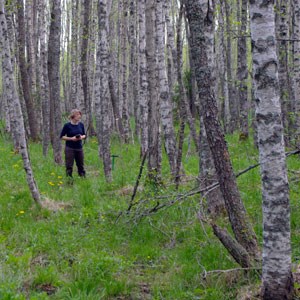Contact
ingvar.sundh@slu.se, 018-673208

Bacillus thuringiensis subsp. israelensis (Bti) has been used in biological control products for several decades. But, how does its use affect native Bacillus populations and potentially other non-target organisms? In a new study, it turns out that the effects on the abundance of bacteria of the Bacillus cereus group (Bcg) were negligible.
Bacillus thuringiensis subsp. israelensis (Bti) has been widely used for biological control of mosquito and black fly larvae. Bti is a common soil bacterium and it belongs to the Bacillus cereus (Bcg) group. When Bti sporulates, it produces pre-toxins that when ingested by mosquito and black fly larvae cause their disease and death.
But what happens when we apply Bti for many years in the same place? Will the native communities of Bcg bacteria be affected? That was the question asked by Salome Schneider and Ingvar Sundh from the Department of Molecular Sciences at SLU together with colleagues from Uppsala University and Aarhus University.
– In Sweden, Bti has been applied on a large-scale for mosquito control in irregularly flooded wet meadows and alder and birch swamps of the River Dalälven floodplain since 2001. Several of the treated sites are situated in Natura 2000 areas. Now, we were concerned that these applications of Bti might have led to changes in the Bcg bacteria populations in the area, changes which potentially could lead to effects on other organisms that were not the target of these actions, says Ingvar Sundh.
Little was known about how abundant native Bti and Bcg are in riverine wetlands. In addition, no information was available regarding environmental persistence and potential dispersal of added Bti spores in the long term. In this study, the authors addressed these questions using molecular methods to analyse soil and sediment samples from different habitats. Samples were taken from sites in wet meadows and in alder and birch swamps, both from sites treated with Bti and from untreated sites. In addition, soil samples were taken in in well-drained forests that had never been treated.
Bcg and Bti were detected in all habitat types, but the variations between habitat types and sampling occasions were high. Overall, the long-term applications of Bti had negligible effects on total Bcg-abundance and small effects on Bti-abundance.
– Our data show that it is highly unlikely that 10 years of Bti use in the River Dalälven floodplains has changed the Bti- and Bcg-abundances to an extent that it might have any longer-term effects on mosquito larvae or potentially on other, non-target organisms, says Ingvar Sundh.
ingvar.sundh@slu.se, 018-673208
Read the whole study here: https://www.ncbi.nlm.nih.gov/pubmed/28600590